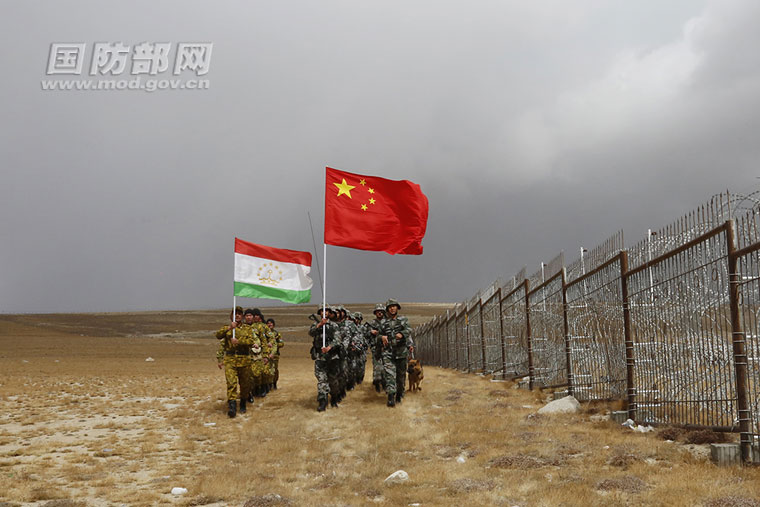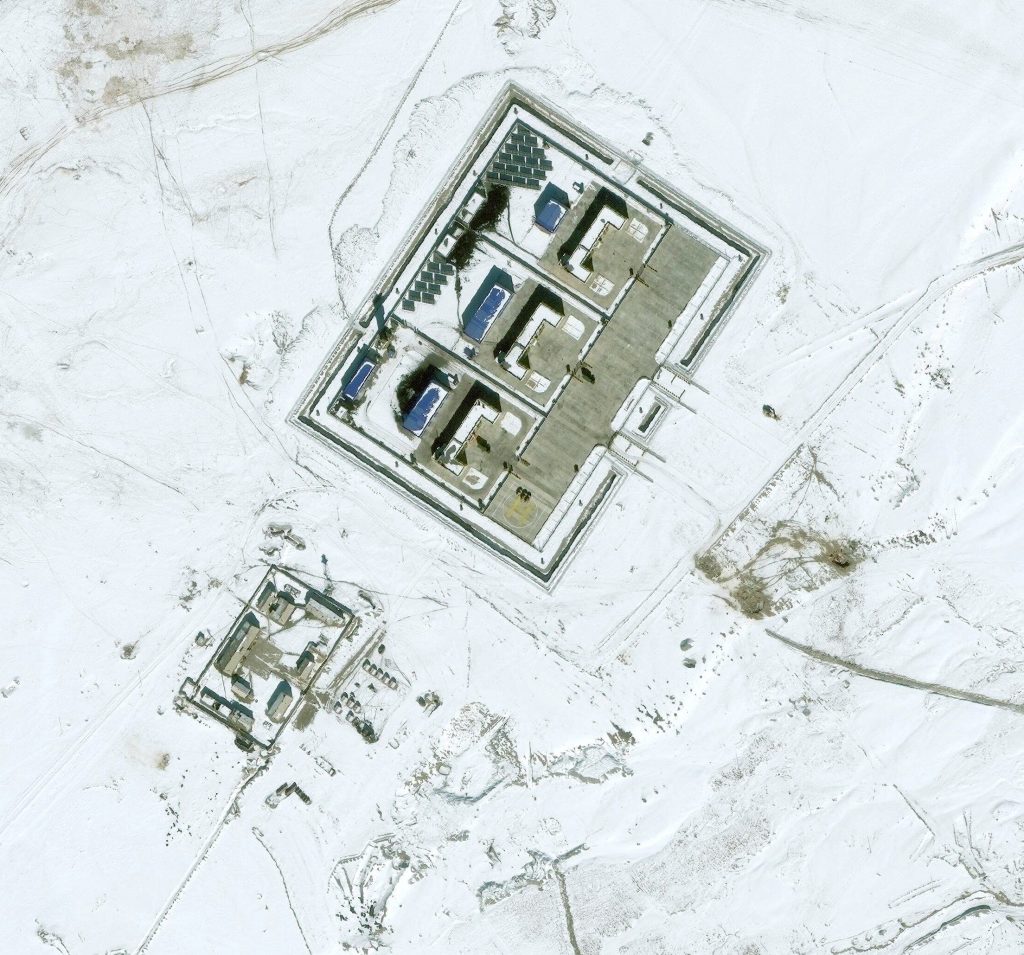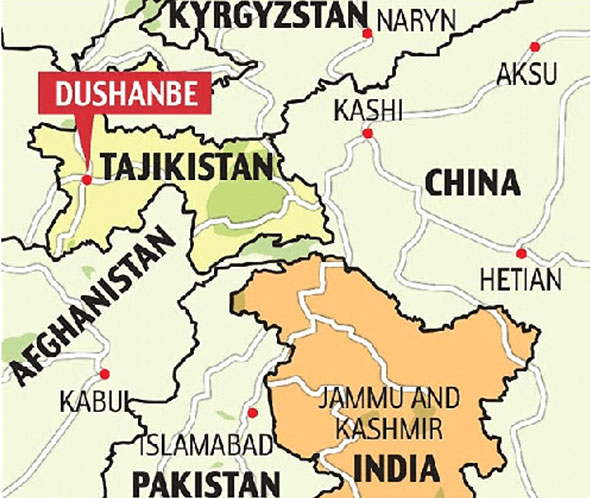
Summary: In 2011, Tajikistan ceded 1158 square kilometers of its territory to China as part of a mutual agreement settling a century-old border dispute. In 2016, China setup its Military base in Tajikistan which is located 12 km from the border with Afghanistan and 30 km from the Chinese border.
China’s military presence in Tajikistan, alongside its major role in Tajikistan’s economy, poses a strategic challenge to India and the entire subcontinent. It is the right of democratic nations of the world like the US, UK, India and the United Nations to help such small and medium countries, engage with them, aiding them in their economic development and ensure that they are part of the democratic norms of the world and not fall into the trap of expansionist and authoritarian forces.
China and Tajikistan relations started on January 4, 1992, shortly after the dissolution of the Soviet Union. Presently Two Way trade has crossed U.S. $2 billion. China is among the three largest trade partners of Tajikistan. A number of large Chinese enterprises in various industries operate in Tajikistan. Tajikistan and China are active members of the regional and international organizations and closely cooperate within the framework of these organizations, particularly the Shanghai Cooperation Organization.
In 2012, Tajikistan obtained from China the promise of nearly $1 billion USD in the form of grants, technical assistance and credits on preferential terms. The legal framework of the two countries accounts more than 200 interstate and intergovernmental agreements. In 2011, China and Tajikistan signed a historic mutual agreement settling a century-old border dispute, with Tajikistan ceding 1158 square kilometres of territory to China, representing 5.5% of the land that Beijing had sought.
Chinese troops have been present in Tajikistan since approximately 2016, with the purpose of monitoring access to the Wakhan Corridor. China has its Military base located 12 km from the border with Afghanistan and 30 km from the Chinese border, where the traditional routes running from eastern Afghanistan to western China intersect. Base is near Gorno-Badakhshan’s Murghob District (it has an area of around 38,500 km², and a population of 14,000) bordering on Afghanistan, China and Kyrgyzstan in the Pamir Mountains. Satellite photographs suggest that the base, whose infrastructure includes heliports, is suitable for a lightly armed subdivision maximally a battalion’s strength supported by armored vehicles.
China has a second base situated in the Wakhan corridor of Afghanistan. Chinese forces have been present there since 2017. The newly discovered base, along with the base in Djibouti and the possible base in Afghanistan, reflects China is building its Military Might to show its domination in Central Asia, Africa to the rest of the World.

When the United States is considering a pact that would pull American troops out of Afghanistan, China appears securing continental ambitions. Meanwhile, Chinese President Xi Jinping’s economic ambitions over the past seven years have brought a wave of major investment projects, from the resource-rich Caspian Sea to Cambodia’s coastline.
The location of the Chinese military base in the frontier zone may suggest that its existence is an unofficial form of repayment of Tajikistan’s debt and, possibly, the beginning of new territorial concessions to the advantage of the stronger neighbour. The weight of the Tajik denial of the Chinese military presence is tempered by the fact that the border adjustments to the benefit of China were denied in a similar manner in 2002 (and were formalised in 2011), owing to which Beijing gained valuable water sources (amongst other things). Similar territorial concessions were made by Kazakhstan (1996) and Kyrgyzstan (1998, revealed in 2001).
Many countries have become victims of China Debt Trap. For example, Mongolia’s debts are now around eight times the nation’s foreign exchange reserves, while the debts of Laos and Kyrgyzstan exceed 100% of their GDP. Eight nations were analyzed as vulnerable to above-average debt: Djibouti, Kyrgyzstan, Laos, the Maldives, Mongolia, Montenegro, Pakistan, and Tajikistan. Sri Lanka is also an example for itself too. Beijing “encourages dependency using opaque contracts, predatory loan practices, and corrupt deals that mire nations in debt and undercut their sovereignty, denying them their long-term, self-sustaining growth,” said US Secretary of State Rex Tillerson on March 6.
Since the collapse of the USSR, Russia has viewed Central Asia as its zone of influence but it is forced to accept the increasing presence of China in this region. Thus Tajikistan is the first former Soviet republic (and also a member of a military alliance under Russian patronage: the Collective Security Treaty Organization) where the regular presence of Chinese soldiers has been confirmed. At the same time, Moscow has been unsuccessfully demanding from Dushanbe that Russian troops should return to the Afghan-Tajik border. Even though the Chinese military base in Gorno-Badakhshan is small, the issue sets a precedence and is further proof of Russia’s weakening position in dealing.

China’s military presence in Tajikistan, alongside its major role in Tajikistan’s economy, poses a strategic challenge to New Delhi. Tajikistan is India’s closest Central Asian neighbour, with Dushanbe being approximately the same distance from New Delhi as Mumbai. Tajikistan’s proximity to Pakistan Occupied Kashmir would also make the country an invaluable strategic asset for India if it could establish an air base on Tajik soil capable of conducting reconnaissance and combat operations.
At last one can say that the Chinese sees the need to be present in those territories which are strategically important for their Trade and Military Strategic Interest. The base in Tajikistan is at the crossroads of Central Asia, China and Afghanistan. So Chinese mere presence of its military bases in a foreign country inevitably transforms the strategic and geopolitical situation in that country. Tajikistan could be under Chinese umbrella to yield more and more of its territory or de facto sovereignty to China. As already many countries have become debt trapped and loosing land and sovereignty. It is the right of United Nations, US, UK, and India to help small medium countries, engage with them and woo them for the economic development and democratic norms of the world before they fell in trap of Chinese “dragon”.
M.AM.PhiL/(PhD SNU South Korea)
